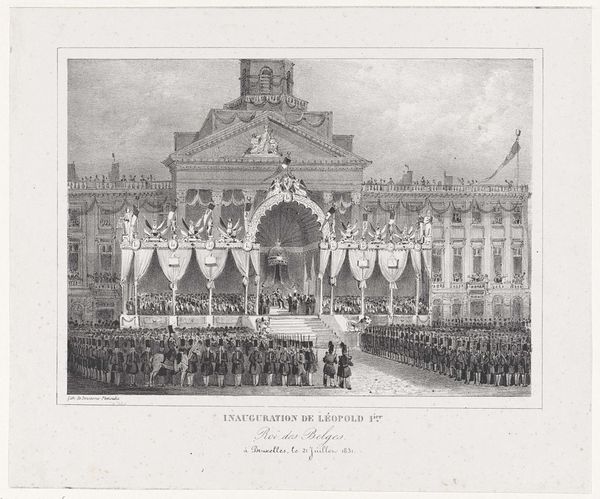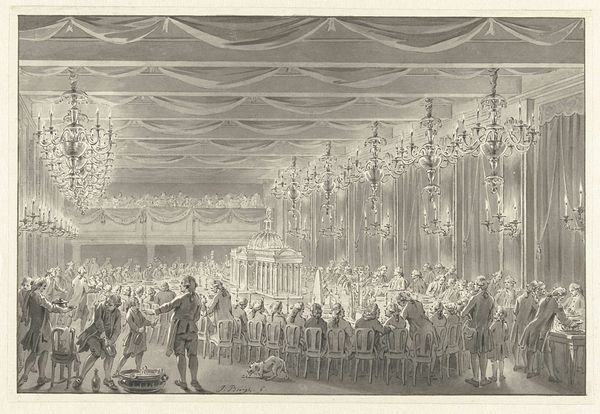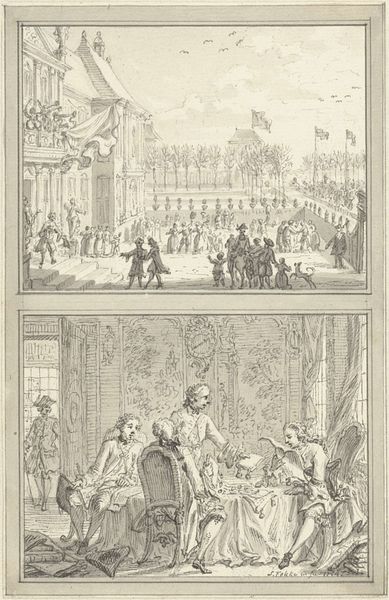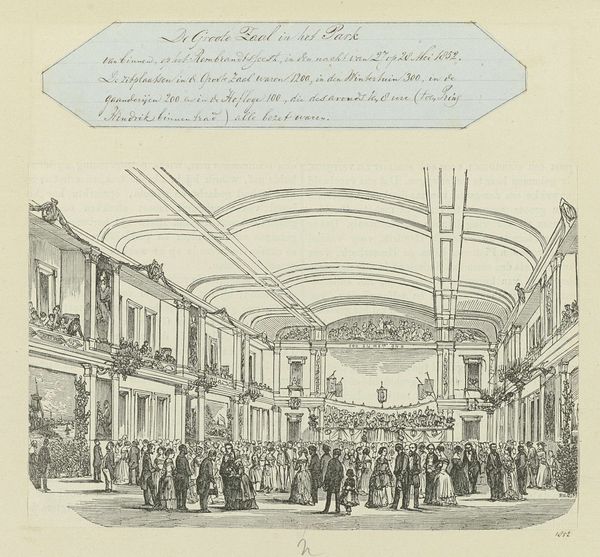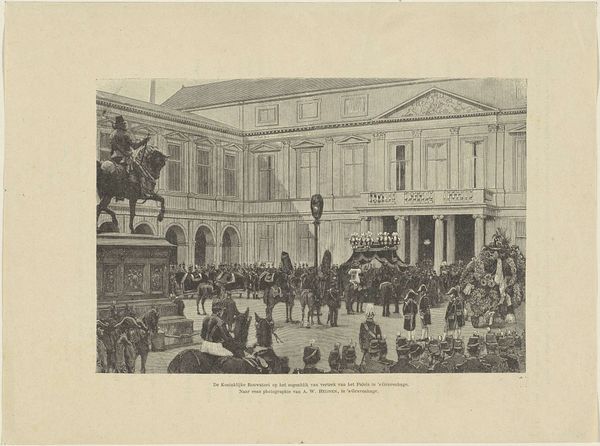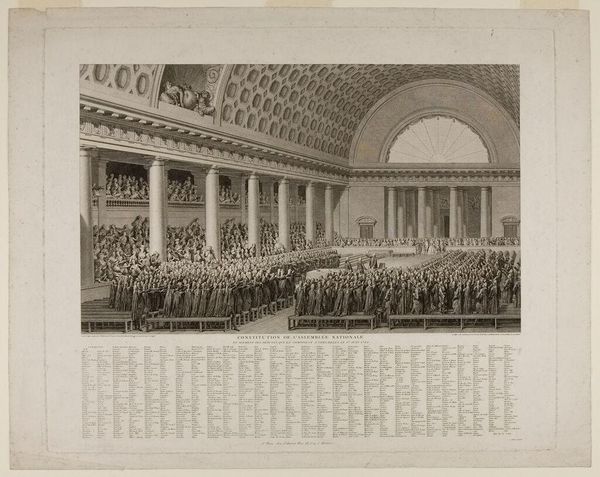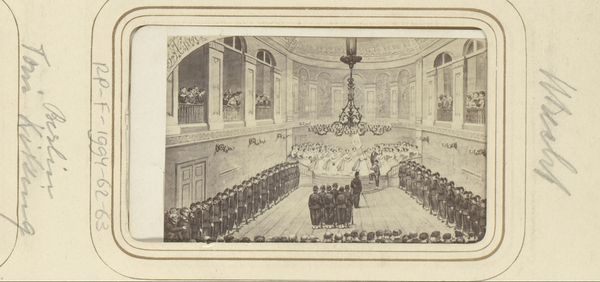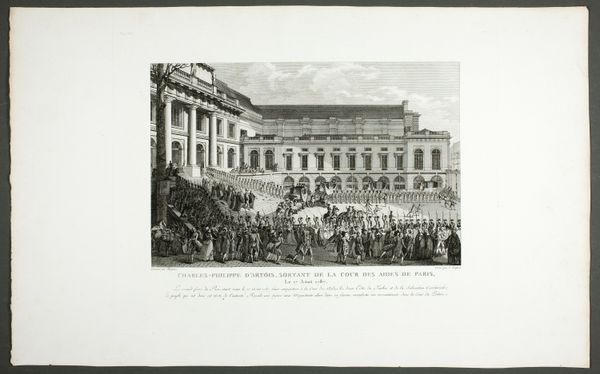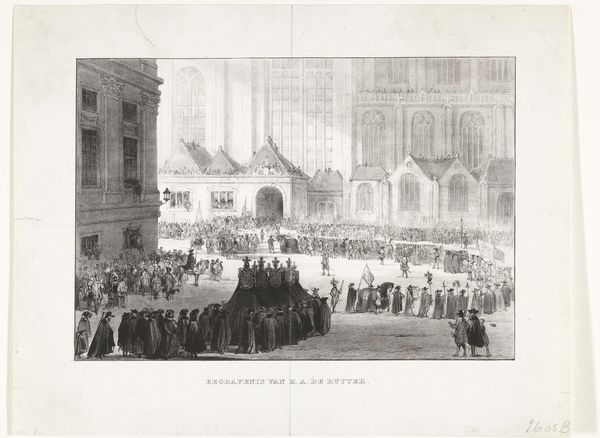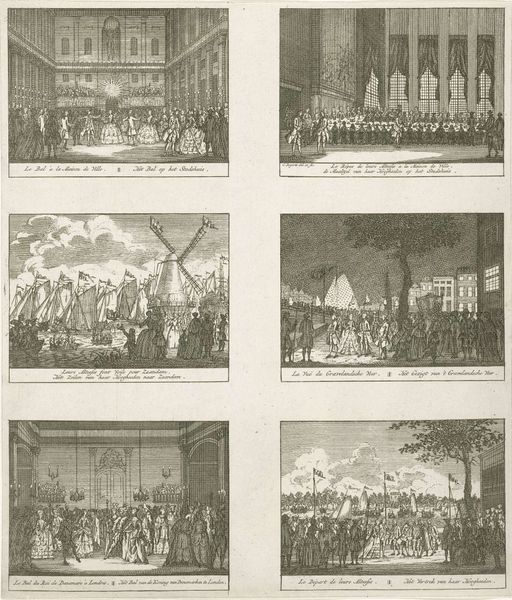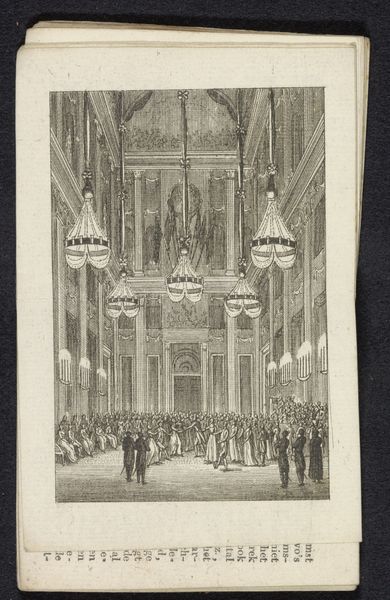
Dimensions: height 380 mm, width 270 mm
Copyright: Rijks Museum: Open Domain
Editor: This is an engraving from 1861, titled "Visit of King Willem III to Emperor Napoleon III." The crisp detail really strikes me. What story do you see unfolding here? Curator: Well, I see two stories, really. The print itself, its production and distribution as a mass-produced image tells a story about 19th-century media and the appetite for images of power and spectacle. The industrialization of printmaking allowed for wider dissemination of these images, reinforcing narratives of national importance. Then the content illustrates the political climate and labour relations of the time. How do you read the depiction of this encounter? Editor: It does seem to present the rulers almost as spectacle, these elaborate displays for public consumption. Curator: Precisely! And what are the processes involved in making it happen? How much did it cost the hosting society, the soldiers’ preparation, the horses… the implications are quite revealing regarding the labour put into upholding these grand images. Consider how this scene, etched with acid on a metal plate, mimics and reinforces the existing social structures. It isn't just a neutral depiction of history. What is included and, more importantly, what is omitted in the images, becomes really significant in reading the social text. Editor: I hadn't thought about the act of engraving as part of the message itself, it's like a form of manufacturing grandeur! It is mass-produced imagery shaping our understanding. Curator: Exactly! It's a commercial product designed to bolster national identity, through skilled labour that rarely receives the credit it deserves. Considering its materials and their societal roles gives the art added layers of purpose and symbolism.
Comments
No comments
Be the first to comment and join the conversation on the ultimate creative platform.
